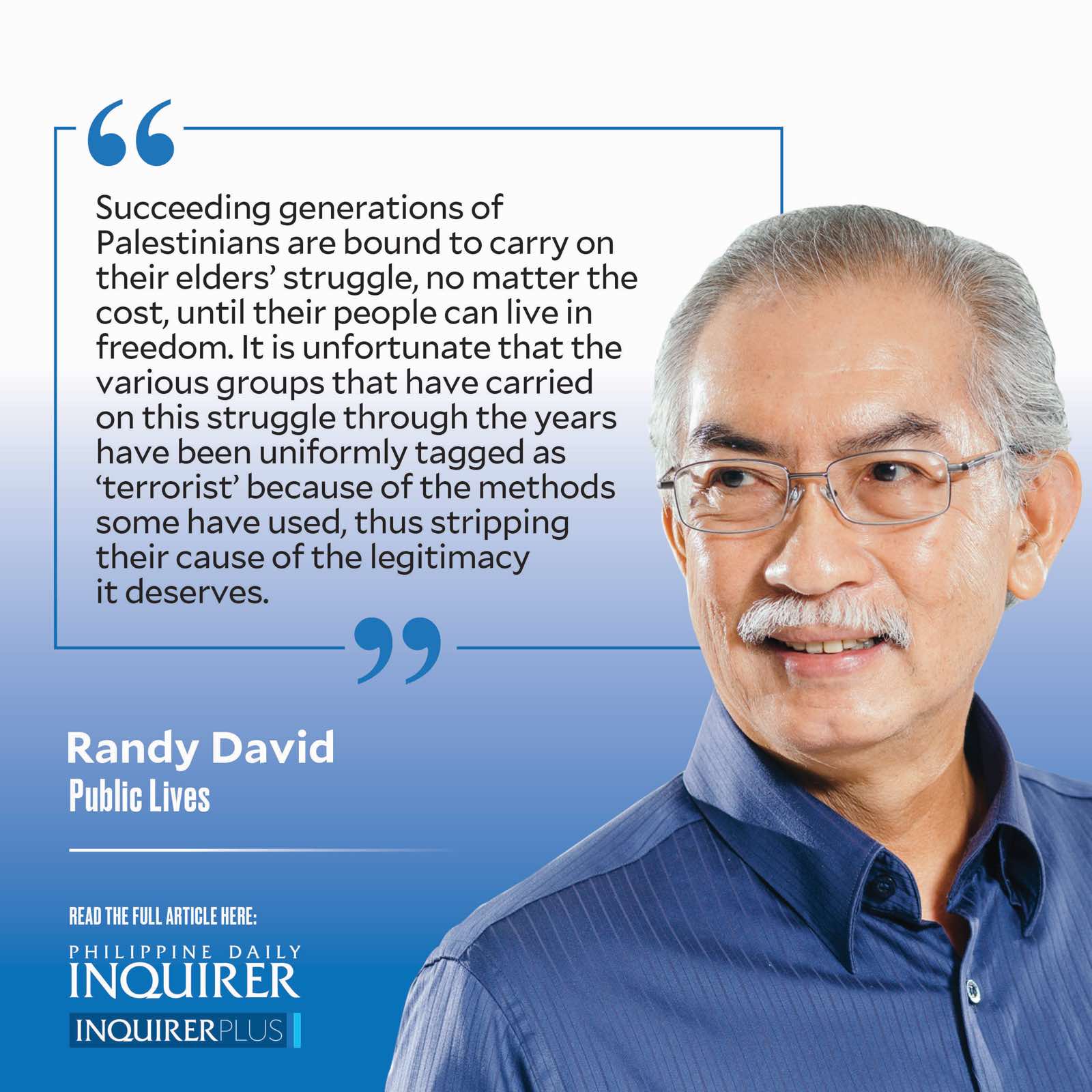The Palestinian question
It is safe to say that much of the world sympathizes with the State of Israel’s right to defend its existence. But Israel cannot hope to continue enjoying that sympathy if, in its fight for survival, it resorts to the same genocidal atrocities that it condemns in its enemies. Moreover, as recent events have shown, it will never feel secure so long as it denies the equal rights of Palestinians to self-determination. Succeeding generations of Palestinians are bound to carry on their elders’ struggle, no matter the cost, until their people can live in freedom. It is unfortunate that the various groups that have carried on this struggle through the years have been uniformly tagged as “terrorist” because of the methods some have used, thus stripping their cause of the legitimacy it deserves. Palestinians need to accept that they cannot gain much global support for their cause for as long as they premise their liberation on the destruction of Israel.The two-state solution that has been proposed by many, and most recently by United Nations Secretary General António Guterres, seems the most reasonable approach to this long-festering conflict. But it is not as easy to implement it as it may seem. Nor is it necessarily as just as it may appear at first blush.
The delineation of boundaries is perhaps the most contentious part, for we are talking of the same territory that is currently occupied by Israel, from which almost a million Palestinian Arabs fled or were expelled during the 1948 Arab-Israeli War. At the minimum, Israel has to agree to withdraw from the Arab territories it captured during the 1967 Six-Day War—the Golan Heights on the Syrian border, the West Bank and East Jerusalem along the Jordanian border, and the Gaza Strip on the Egyptian border. (The Sinai Peninsula was returned by Israel to Egypt in 1979 as part of the peace treaty between the two countries).
Article continues after this advertisementTogether, these are called the “Green Line” or the “pre-1967 borders,” a demarcation line resulting from the 1949 Armistice Agreements. Withdrawal from the territories beyond the “Green Line” would mean that Israel must agree to remove the Jewish settlements it established south and east of the Green Line in the aftermath of the Six-Day War.
Israel undertook a similar dismantling of Israeli settlements in 2005 as part of its “unilateral disengagement plan” from the Gaza Strip, evacuating about 8,000 Jewish settlers, and leaving that heavily fenced narrow strip of land to serve as a home (some say prison) for more than two million Palestinian inhabitants. Far from being an Israeli concession to a Palestinian state, the Israeli disengagement from Gaza was intended primarily to consolidate Israeli territory under a Jewish majority population, while confining the Palestinians to their enclaves. Today, Israel retains control over Gaza’s air and maritime space, and six out of seven land crossings. It also controls the latter’s water, electricity, and other utilities. It keeps a tight watch on the Palestinian population registry and maintains heavily patrolled no-go zones within the West Bank. There is no other term for this but apartheid.Without the appropriate guarantees and commitments ensuring the enjoyment of fundamental rights, a two-state solution would not be any different from what already exists today. Palestinians in Gaza are isolated from other Palestinians in the West Bank. In Gaza, the Hamas controls what semblance of government there is inside the Strip; but for nearly everything else, Gaza residents are at the mercy of Israel. In the West Bank, the Israeli government shares administrative control with a notoriously inept and corrupt Palestinian Authority.
It seemed an extremely clever move. Under the guise of giving Palestinians autonomy in their own territory, while keeping much of historic Palestine for itself, Israel enforces what amounts to an apartheid policy not unlike that which existed in South Africa. But rather than a negotiated partition of South Africa along racial lines, Nelson Mandela and the African National Congress consistently called for a unitary South African state that would give every citizen one vote irrespective of race.
Article continues after this advertisementToward the end of his life, the late Palestinian-American scholar Edward Said, who had earlier pushed for a two-state solution, came to realize that a single-state solution, where Arabs and Jews alike would share the land and where equal rights were guaranteed to all citizens, might be a better option. This, as it turned out, was what the Israeli leadership feared more. In a one-man-one-vote polity, the Israelis would be easily outnumbered. As the former prime minister Ariel Sharon put it, in explaining the rationale for his 2004 disengagement plan for Gaza: “We cannot hold on to Gaza forever. More than a million Palestinians live there and double their number with each generation.” Shimon Peres, Nobel Peace Prize laureate and former prime minister, offered the same thought more succinctly: “We are disengaging from Gaza because of demography.”
The problem is that Israel did not merely disengage from Gaza. It proceeded to lock up the Palestinians in their ghettos, perhaps in the vain hope that, in their impoverished condition and in their inability to agree among themselves, they would cease to be a threat to Israel.
—————-
















